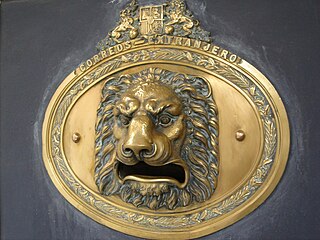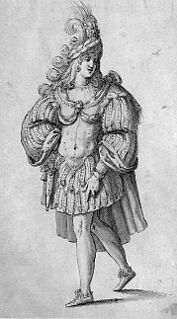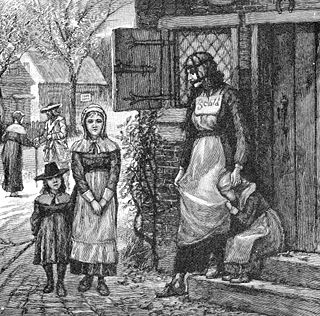 W
WThe Carnival of Satriano, held in Satriano di Lucania, Italy every February, is one of the country's many carnivals. Held on the Friday, Saturday and Sunday before Fat Tuesday, it has been conducted for centuries. The event is among the most important carnival traditions of the region and of Italy and it is unique in that participants wear costumes, or masks, of bears, hermits, or lent.
 W
WThe Carnival of Venice is an annual festival held in Venice, Italy. The carnival ends on Shrove Tuesday, which is the day before the start of Lent on Ash Wednesday. The festival is world-famous for its elaborate masks.
 W
WDuring the time of Napoleon Bonaparte, it was customary to cast a death mask of a great leader who had recently died. A mixture of wax or plaster was carefully placed over Napoleon's face and removed after the form had hardened. From this impression, subsequent copies were cast. Much mystery and controversy surrounds the origins and whereabouts of the most original cast moulds. There are only four genuine bronze death masks known to exist.
 W
WA domino mask is a small, often rounded mask covering only the area around the eyes and the space between them. The masks have seen special prevalence since the 18th century, when they became traditional wear in particular local manifestations of Carnival, particularly with Venetian Carnival. Domino masks have found their way into a variety of high and popular art forms.
 W
WThe Dorset Ooser is a wooden head that featured in the 19th-century folk culture of Melbury Osmond, a village in the southwestern English county of Dorset. The head was hollow, thus perhaps serving as a mask, and included a humanoid face with horns, a beard, and a hinged jaw which allowed the mouth to open and close. Although sometimes used to scare people during practical jokes, its main recorded purpose was as part of a local variant of the charivari custom known as "skimity riding" or "rough music", in which it was used to humiliate those who were deemed to have behaved in an immoral manner.
 W
WThe French ban on face covering is an act of parliament passed by the Senate of France on 14 September 2010, resulting in the ban on the wearing of face-covering headgear, including masks, helmets, balaclavas, niqābs and other veils covering the face in public places, except under specified circumstances. The ban also applies to the burqa, a full-body covering, if it covers the face. Consequently, full body costumes and Zentais were banned. The bill had previously been passed by the National Assembly of France on 13 July 2010. In April 2011, France became the first European country to impose a ban on full-face veils in public areas.
 W
WThe Guy Fawkes mask is a stylised depiction of Guy Fawkes, the best-known member of the Gunpowder Plot, an attempt to blow up the House of Lords in London on 5 November 1605. The use of a mask on an effigy has long roots as part of Guy Fawkes Night celebrations.
 W
WL'Inconnue de la Seine was an unidentified young woman whose putative death mask became a popular fixture on the walls of artists' homes after 1900. Her visage inspired numerous literary works. In the United States, the mask is also known as La Belle Italienne.
 W
WKrampus is a horned, anthropomorphic figure, in Alpine folklore, who during the Christmas season scares children who have misbehaved, assisting Saint Nicholas. The pair visit children on the night of the 5th December, and Saint Nicholas rewards the well-behaved children with modest gifts such as oranges, dried fruit, walnuts and chocolate whilst the badly behaved ones only receive punishment with birch rods.
 W
WLion mask is a motif used from antiquity as an emblem of strength, courage, and majesty.
 W
WThe Mask of Agamemnon is a gold funeral mask discovered at the ancient Greek site of Mycenae. The mask, displayed in the National Archaeological Museum of Athens, has been described by Cathy Gere as the "Mona Lisa of prehistory".
 W
WThe maskarada [mas̺ˈkaɾada] is an itinerant set of traditional dances, theatre acts and parades that takes place annually in different towns and villages across the Basque region of Soule, France, during the time of carnival. It is generally referred to in the plural (maskaradak) as it is repeated across the region on the streets of villages over the span of a month or two in late winter through spring. The plays are performed by the villages' inhabitants, and the arrangements for each maskarada are the responsibility of each participating village. Sometimes, when two villages are very small, they will share arrangements together.
 W
WThe masque was a form of festive courtly entertainment that flourished in 16th- and early 17th-century Europe, though it was developed earlier in Italy, in forms including the intermedio. A masque involved music and dancing, singing and acting, within an elaborate stage design, in which the architectural framing and costumes might be designed by a renowned architect, to present a deferential allegory flattering to the patron. Professional actors and musicians were hired for the speaking and singing parts. Often the masquers, who did not speak or sing, were courtiers: the English queen Anne of Denmark frequently danced with her ladies in masques between 1603 and 1611, and Henry VIII and Charles I of England performed in the masques at their courts. In the tradition of masque, Louis XIV of France danced in ballets at Versailles with music by Jean-Baptiste Lully.
 W
WPerchta or Berchta, also commonly known as Percht and other variations, was once known as a goddess in Alpine paganism in the Upper German and Austrian regions of the Alps. Her name may mean "the bright one" and is probably related to the name Berchtentag, meaning the feast of the Epiphany. Eugen Mogk provides an alternative etymology, attributing the origin of the name Perchta to the Old High German verb pergan, meaning "hidden" or "covered".
 W
WThe Procession de la Sanch is an annual ceremony in several towns in the French Catalonia. It is held during Holy Week on Good Friday. Historically, a distinctive peaked, masked robe was used to protect the identity of prisoners being led to their town's annual execution. This practical ceremony intermingled with Christian traditions of Good Friday, and today a long procession of black-robed people are led in silence by the red-robed regidor to the solemn tapping of a tambourine, as part of the Good Friday celebrations.
 W
WA scold's bridle, sometimes called a witch's bridle, a brank's bridle, or simply branks, was an instrument of punishment, as a form of torture and public humiliation. It was an iron muzzle in an iron framework that enclosed the head. A bridle-bit, about 2 in × 1 in in size, was slid into the mouth and pressed down on top of the tongue, often with a spike on the tongue, as a compress. It functioned to silence the wearer from speaking entirely, and caused extreme pain and physiological trauma to scare and intimidate the wearer into submission. The scold's bridle was overwhelmingly used on women, and was often done so upon request from husbands or other family members. This prevented speaking and resulted in many unpleasant side effects for the wearer, including excessive salivation and fatigue in the mouth.
 W
WZanni, Zani or Zane is a character type of commedia dell'arte best known as an astute servant and a trickster. The Zanni comes from the countryside and is known to be a "dispossessed immigrant worker". Through time, the Zanni grew to be a popular figure who was first seen in commedia as early as the 14th century. The English word zany derives from this persona.